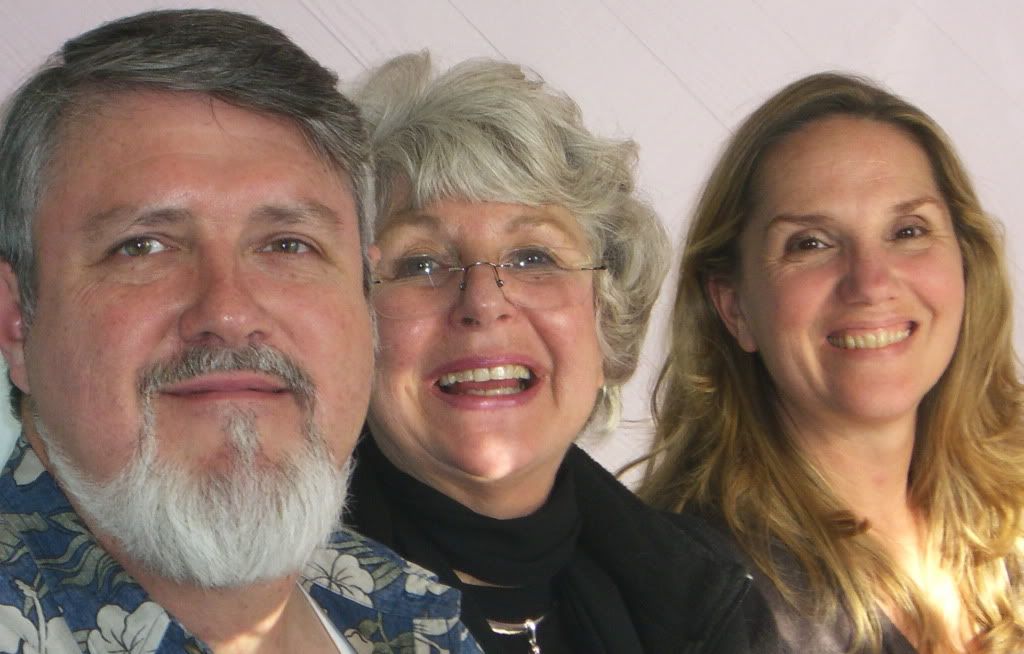| Welcome |
|
Feburary 19, 2017
Protein – how much?
Hi ,
 Most everything the public knows about nutrition comes from the US Department of Agriculture. Those are the guys that put out the food pyramid and determine public policy that controls what is fed our kids in school and what is taught in school about nutrition. The USDA exists to protect and provide for the needs of farmers and farm interests, not the public in general. Its policies and pronouncements are based
on politics and support of farm profits, not human health.
Most everything the public knows about nutrition comes from the US Department of Agriculture. Those are the guys that put out the food pyramid and determine public policy that controls what is fed our kids in school and what is taught in school about nutrition. The USDA exists to protect and provide for the needs of farmers and farm interests, not the public in general. Its policies and pronouncements are based
on politics and support of farm profits, not human health.
With this understanding we begin to see why diseases like cancer, heart disease, diabetes, and dementia, which are all diet driven, are 2x, 5x, even 10x more common now than they were 100 years ago. Would you let a car dealer set public policy as to how many cars you should own? How about let a drug dealer decide whether you should take drugs… oh wait, we already do that. They’re called pharmaceutical corporations pushing medications to
“control” your health.

My interest in this article is protein – how much do we need and where can we get it in a healthy form.
The first thing to understand is that protein is everywhere. Everything living is made with proteins. DNA is protein. All the machinery that does anything in all cells is made from protein. So any time you eat any whole, real food you are getting some protein.
Fun fact number one: you need about 10% of your daily calories from protein. So for someone eating 2000 calories a day, they would need about 200 calories of protein a day or 50 grams. This translates to a little less than 2 ounces of pure protein.

Fun fact number 2: on average about 10% of the calories from fresh, whole vegetables of all sorts is from protein. So if all your calories each day came from fresh whole vegetables, you would get the perfect amount of protein simply by eating enough vegetable calories.
So why is protein malnutrition such a problem all over the world? In third world countries it is simply because they just don’t get enough food to eat to meet their caloric requirements each day, so protein is lacking as well. In the rest of the world, the problem is people are not eating their vegetables. Instead they are eating empty calories from processed foods. There is no protein in soda pop, but lots of calories. There is no protein in
deep fried oils that are dripping in calories.  There is no protein in alcoholic beverages, but lots of calories. There is no protein in candy and other sugar based foods. Yet lots of folks today will get the majority of their calories from exactly these types of foods. There is no protein in alcoholic beverages, but lots of calories. There is no protein in candy and other sugar based foods. Yet lots of folks today will get the majority of their calories from exactly these types of foods.
In this country we have been taught how important protein is so we don’t see much protein malnutrition, except in alcoholics and select other groups. Yet we eat all the same crappy foods I just listed that have no protein in them. How do we not have protein deficiencies? We eat meat - lots of it. We compensate for our poor food choices by eating supercharged protein sources – burgers, cheese, steaks, chickens, eggs, chops, ribs, sausages, tofu, fish,
and so on.
This concentrated protein consumption is fairly new to the human species, much like growing grains is new. Agriculture has only been practiced by humans for maybe 10,000 years. As romantic as the image of our hunter-gatherer ancestors sitting around the campfire eating mastodon steaks may look, it is not real. They were not really very good hunters and most of their food came from gathering. Most of their protein came from eating vegetables.

When I talk about vegetables today, I am not talking about ears of corn and russet potatoes, although they count. I am talking about greens like spinach, kale, chard, roots like beets, carrots, sweet potatoes, and rutabaga. We are talking about cabbage, onions, broccoli, celery, mushrooms, squash of all sorts, and the list goes on and on. There are hundreds of vegetables we can eat, and on average their protein content is ideal for our needs if we eat enough of them to
meet our caloric needs.
That last line is the tricky part, because we don’t eat enough vegetables to meet our protein needs. So we need to add higher protein foods into our diet like legumes, nuts, and clean meats. Even if I were the perfect vegetarian and only ate vegetables and fruits, I would have to add in extra protein because fruits are  lower in protein generally than
vegetables. Grains vary from protein levels similar to vegetables – as in wheat, to grains with lower protein like rice. Understand that these protein levels are for unprocessed whole foods, not refined processed foods. Also understand that any calories we consume from oils, even good oils, will have to be compensated for with higher protein foods. So while a bagel may have 10% protein by calorie count, add some sugar and deep fry it to make a doughnut and now you
will have three times the calories but the same level of protein. lower in protein generally than
vegetables. Grains vary from protein levels similar to vegetables – as in wheat, to grains with lower protein like rice. Understand that these protein levels are for unprocessed whole foods, not refined processed foods. Also understand that any calories we consume from oils, even good oils, will have to be compensated for with higher protein foods. So while a bagel may have 10% protein by calorie count, add some sugar and deep fry it to make a doughnut and now you
will have three times the calories but the same level of protein.
Depending upon our lifestyle we need 40 to 70 grams of protein per day – 160 to 280 calories from protein. Meat is about 50% protein by weight, so that means we need 3 to 5 ounces of meat a day if that were our only protein source. Although vegetables average 10% protein by calorie, vegetables are a less dense food source because they have a lot of water and fiber in them, so they may average only 2% to 4% protein by weight. That means you would need to eat 2 to
7 pounds of whole vegetables each day to get your protein requirements met. Now you see why nobody depends on vegetables for their protein, even though they could and it would be much healthier for them to do so.

It’s easier to meet our needs from dense proteins, like meat, but they have their problems. Dense proteins severely tax our digestive system and usually we are not able to completely digest them. This promotes the growth of many unfriendly strains of bacteria in our guts that create inflammation both there and elsewhere in our body. Inflammation is the basis of most all our chronic diseases. High meat consumption also promotes growth. This makes us
bigger and taller, but also promotes other growth, like cancer cells. Yet certain nutrients can only be found in meats, so meat consumption is a double-edged sword. The trick is to find the sweet spot. How much meat protein does your body want and need? We are each unique on that subject.

My suggestion – eat as many vegetables as you can and keep the meat consumption down to a couple ounces a day at most. Supplement your protein with intermediate protein sources like raw nuts and properly prepared legumes. Reduce the load of empty calories from sugars, starches, and vegetable oils. Eat whole unprocessed foods. Pause to enjoy your food. Nourishing yourself is designed to be an act of self-love, not a rushed self-abuse.
Take care,
David
Ellen update: 
Last week we had Valentine's Day. I made my traditional giant chocolate chip cookie - carb fee, sugar free, and gluten free for Ellen with the bonus of some sugar free freezer jam I made for decoration. Ellen made me a pretty card as she is really getting into her art these days.

|
| |
Eating shortens lifespan? It may sound silly, by the evidence is piling up - eating less increases both health and lifespan. By restricting calories the body has time to slow down and repair itself. We have already seen this with poison removal from the body. Eating and snacking all day blocks the liver from going into detoxification mode to clean up the waste and poisons in the blood. The same now appears to be true for our protein
factories in our cells. When we eat less they have time to stop producing proteins and repair themselves.
It may sound silly, by the evidence is piling up - eating less increases both health and lifespan. By restricting calories the body has time to slow down and repair itself. We have already seen this with poison removal from the body. Eating and snacking all day blocks the liver from going into detoxification mode to clean up the waste and poisons in the blood. The same now appears to be true for our protein
factories in our cells. When we eat less they have time to stop producing proteins and repair themselves.
Eating
____________________________________________
"Happiness is that state of consciousness which proceeds from the achievement of one's values."
~ Ayn Rand
__________________________________
Rheumatoid Arthritis relief Rheumatoid Arthritis researchers have found an off switch for the inflammation from rheumatoid by the simple stimulation of the Vagus nerve. The vagus nerve is you primary parasympathetic nerve supply to your organs. Parasympathetic nerves are the opposite to the fight or flight sympathetic nerves. The researchers were using electrical stimulation of the nerve, but there are many ways to stimulate this nerve such as
slow deep belly breathing, humming, cold water to the face, and a couple dozen other ways. Stimulation of the vagus is the key to many different health improvements.
Rheumatoid Arthritis researchers have found an off switch for the inflammation from rheumatoid by the simple stimulation of the Vagus nerve. The vagus nerve is you primary parasympathetic nerve supply to your organs. Parasympathetic nerves are the opposite to the fight or flight sympathetic nerves. The researchers were using electrical stimulation of the nerve, but there are many ways to stimulate this nerve such as
slow deep belly breathing, humming, cold water to the face, and a couple dozen other ways. Stimulation of the vagus is the key to many different health improvements.
Arthritis
______________________________________________
"The hardest thing to explain is the glaringly evident which everybody had decided not to see."
~ Ayn Rand
_______________________________
New no-drill cavity treatment For cavities between teeth or on smooth surfaces a new dental procedure can repair these small cavities without anesthesia or drilling. A liquid resin is applied to the cavity sealing it up. This does not work for the biting surfaces of the teeth.
For cavities between teeth or on smooth surfaces a new dental procedure can repair these small cavities without anesthesia or drilling. A liquid resin is applied to the cavity sealing it up. This does not work for the biting surfaces of the teeth.
Cavities
"A creative man is motivated by the desire to achieve, not by the desire to beat others."
~Ayn Rand
________________________________________________
Our address is 9725 Fair Oaks Blvd. suite A
Our hours are M - F 9 to 1 and M, Tu, & Th 3 to 6
Finding the new location is very easy. Coming from highway 50 up Sunrise Blvd, you turn left and go up a block. We are on the right hand side - the building just past the Subway Sandwich shop. If you are coming down Sunrise from the Mall area then just turn right on Fair Oaks Blvd and up a block on the right.
If you are coming from the Roseville area you could come down Sunrise Blvd, but that is a long trek. It is probably shorter time wise to come down Auburn Blvd - San Juan Ave like you have been for the Sunset office, but instead of turning left at Sunset, keep going straight 3 more lights to Fair Oaks Blvd and turn left. Go down 2 lights to New York Ave, go through the intersection, and immediately turn into the turn lane once the center
divider ends. We are on the left.
You are free to reprint this article in your newsletter as long as you include the following statement in the same size type and color:
"This article appears courtesy of Fair Oaks Health News, offering natural and healthy solutions for body, mind and soul. For a complimentary subscription,
visit http://www.fairoakshealth.com"
|
| |
|
|
|
_______________
to check on old newsletters
_______________
About Dr. DeLapp
|
Dr. DeLapp has been a philosopher, non-force Chiropractor, medical intuitive, and health innovator for over 30 years. He began experimenting with medical intuition in 1972 while studying physics at UC Davis. In addition to physics he designed and completed an individual major in the philosophy and psychology of education. Shortly after he choose to pursue a career in the only
truly health oriented profession available at that time, Chiropractic. He graduated with honors in 1981 with his doctorate and opened a private practice.
Since that time he has continued his research into the effects of consciousness and learning on health.
He developed the Biomagnetic Retraining system for correcting movement abnormalities.
Since 1991 he has focused on developing a powerful system for uncovering and assisting the mind-body connection in health and personal growth. The in-depth coaching, guided by the subconscious direction from the body, is called Heartflow and the simpler mind-body retraining for health and unfoldment he has named Gracework. Both are available at Fair Oaks Health.
Fair Oaks Healing
& Arts Center
Staff
 Dr David DeLapp DC
Dr David DeLapp DC
Chiropractor
Ellen Flowers FGM
Spiritual Life CoachEnergetic Nutritionist
Health Care Coordinator
Susan Richardson
Office Manager
Front Desk
Sherry Herrera
Front Desk Person
Susan McDonald
Catherine Cummings
Is there a sweet that is not poisonous? Yes!
 Dr Dave Supersweet Drops and 2X Sugar Substitute
Dr Dave Supersweet Drops and 2X Sugar Substitute
New Products
Flax Lignans

Root Beer
 Safe Antiperspirant
Safe Antiperspirant

|
|

